Long overlooked, the Amazigh language is now experiencing a historic revival in Morocco, propelled by unprecedented institutional support, technological innovation, and civic engagement. At the forefront of this transformation stands the Royal Institute of Amazigh Culture (IRCAM), leading efforts to restore Tamazight to its rightful place across public life, education, and the digital world.
Since the adoption of the 2011 Constitution recognizing Amazigh as an official language, Morocco has laid down the legal and structural groundwork for its integration. The enactment of Organic Law 26-16 paved the way for its use in public institutions, media, and education. In 2025, the government allocated 200 million MAD to promote Amazigh across administrations and public services, part of a wider 1 billion MAD national strategy to elevate the language across the public sphere.
This commitment is also reflected in human resources: by the end of 2025, 2,373 Amazigh-speaking agents will be deployed across public offices to ensure inclusive and equitable communication.
Founded in 2001, IRCAM serves as a driving force for Amazigh linguistic and cultural advancement. One of its most groundbreaking initiatives is the launch of the MOOC – IRCAM platform, a free online learning tool offering structured access to Tamazight for a diverse adult audience—students, civil servants, service users, and professionals.
The platform is a direct response to field challenges, especially the shortage of qualified Amazigh teachers and limited geographical access to education. Alongside this digital effort, specialized training manuals and curricula have been developed for institutions like the Royal Institute of Territorial Administration (IRAT), the Higher Institute of Information and Communication (ISIC), and the Higher Institute of Dramatic Arts and Cultural Animation (ISADAC).
The Ministry of National Education aims to extend Amazigh teaching to 50% of primary schools by 2025-2026, with full integration planned by 2029-2030. In 2023-2024 alone, 600 specialized teachers were hired, and over 2,000 primary school instructors will be trained to incorporate Tamazight alongside other subjects.
In higher education, Amazigh studies degrees are now available in universities across Agadir, Fez, and Oujda. In 2023, the Ministry of Higher Education launched a national standard curriculum for primary education training in Amazigh, piloted at ENS Rabat and the Teacher Training School of Oujda.
Far from remaining confined to classrooms, Tamazight is rapidly becoming a digitally accessible language. Through interactive platforms, mobile apps, and online resources, the language is entering Moroccan homes, smartphones, and digital spaces.
Initiatives like LikArt, launched in 2024, blend augmented reality, interactive learning, and multilingual content to help children and families engage with Tamazight through modern technology.
IRCAM promotes an inclusive linguistic approach, embracing Morocco’s three major Amazigh dialects: Tarifit, Tamazight, and Tachelhit. The recently published educational guide, “Sawlat s tmazight”, is available in all three variants, reflecting a commitment to diversity while fostering cohesion.
More than ever, Tamazight is being taught, digitized, institutionalized, and normalized. It’s becoming a language of citizenship, modernity, and social equity. While challenges remain—such as training educators, producing teaching materials, and raising public awareness—the path is clear.
The Amazigh language is no longer just part of Morocco’s past. It’s a living, evolving part of its future.




